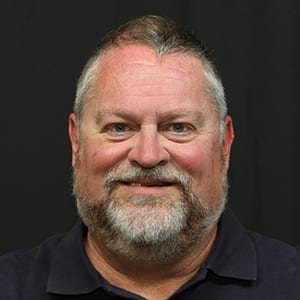MOORESVILLE, N.C. — Roger Penske and Penske Corp. have always been ahead of the curve in racing and business.
That has ushered in the era of sustainability in both racing and in his trucking business. Penske, chairman and owner of Indianapolis Motor Speedway, understands the importance of making a business relevant with the times.
Since taking over the world’s most famous race course from the Hulman-George family, Penske has made sustainability a top priority. Under Penske’s leadership, a variety of sustainability efforts have been unveiled.
All tires for this year’s Indy 500 practice, qualifications and race were delivered from Firestone’s central Indiana warehouse using the Freightliner eCascadia from Penske Truck Leasing’s fleet of electric vehicles.
The Firestone Firehawk guayule race tire made its competition debut as the alternate race tire in August at the Big Machine Music City Grand Prix. It is partially composed of a new sustainable natural rubber derived from the guayule (y-U-lee) shrub, which requires less harvesting than traditional sources of rubber.
Indianapolis Motor Speedway took significant steps toward cleaner energy consumption and a lowered carbon footprint in May. All electricity consumed throughout the facility is being purchased with renewable energy credits.
The Indianapolis 500 is a certified responsible event by the Council for Responsible Sport.
This is the first time a motorsports event has achieved the distinction and marks a key milestone for one of sports’ most iconic events.
Beginning next year, Shell will produce a race fuel for the IndyCar Series. This new product consists of a blend of second-generation ethanol derived from sugarcane waste and other biofuels to create a fuel that is 100 percent comprised of feedstocks categorized as “renewable.”
Although the race cars continue to use internal combustion engines, a hybrid-assist component will be added beginning in 2024.
“It’s important because there is a lot of chatter about it but not much action from many series,” Team Penske driver Scott McLaughlin said. “IndyCar is going to the forefront with Penske Entertainment and IndyCar itself working with our brands like Shell and Freightliner and Daimler and everyone else. It’s really important.
“You can talk as much as you want, but if you don’t have people supporting the series like Shell, Firestone, Freightliner and Daimler, it’s hard to put that stuff into action,” McLaughlin added. “These companies have been really great with everything, setting everything up, making sure we are using renewable sources and making our category as sustainable as it can be for a motorsport series. From a driver’s perspective, that makes our jobs look well going into the future and something we can take on board as drivers and really promote that.”
Penske is at the forefront of the commercial electric vehicle movement and has been supporting the use of alternative fueled vehicles for nearly 30 years. In 2018, Penske became the first commercial fleet in North America to take delivery of a fully electric truck from Daimler Truck North America.
The availability of charging stations is a key concern for electric delivery trucks. Penske has implemented a network of heavy-duty electric high-speed charging stations in Southern California with select locations that are equipped with an innovative battery energy storage system designed to offset demand on the electricity grid during peak charging times.
Driving an electric truck is different than the standard diesel-powered vehicles that have been part of the transportation system for the last 100 years. According to Penske Corp., truck drivers, who have spent years operating diesel vehicles, are blown away by the experience of driving an electric truck or tractor.
It is a dramatically quieter ride, a huge benefit to drivers, and it also alleviates the majority of the noise emitted externally, making for less disturbance in neighborhoods where trucks operate.
The torque, acceleration and ability to maintain speed on inclines is a unique capability of an electric powertrain.
The eCascadia Freightliner’s electric powertrain will provide consistent torque and speed.
This technology, however, will allow emissions at the source of energy production, as opposed to every single vehicle powerplant cruising the planet. It allows EVs used to increasingly utilize clean, renewable energy as it becomes more available.
McLaughlin and transporter driver and crew member Gary Yingst were at Daimler Truck North American headquarters, where the special livery on the race car and Freightliner eCascadia were unveiled at Electric Island on Aug. 31.
By the end of the weekend, McLaughlin gave Freightliner and Daimler a tremendous return on its investment when he drove to a dominant victory in the Grand Prix of Portland.
Electric Island is one of the fastest charging stations in the world, recharging the batteries that allow these heavy-duty semis to travel up to 230 miles with heavy loads, depending on conditions. It can be charged to 80 percent battery capacity in 90 minutes, making it a truck suited for regional and local runs.
Showcasing the eCascadia and bringing it into the IndyCar fleet provides key exposure to Daimler and Freightliner.
